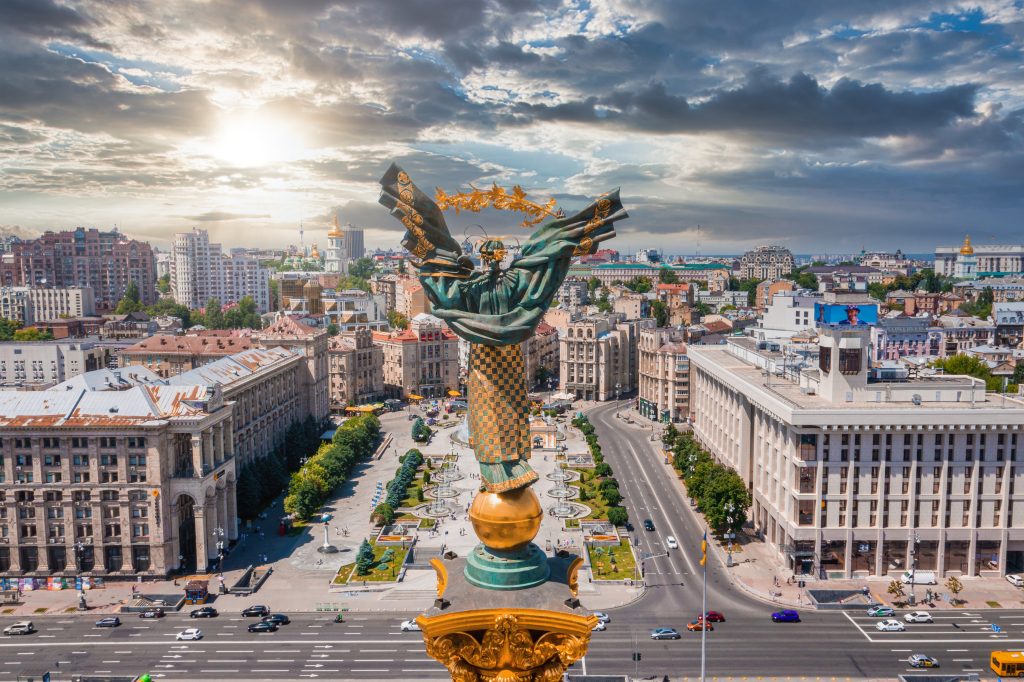Beginning October 10th, 2022, the Russian Federation has explicitly and systematically targeted Ukraine’s power system, which is vital for the well-being of the country’s citizens and economy. To date, Russia has carried out over ten huge missile strikes and many rounds of drone strikes against power stations around the country.
Before these attacks, Ukraine’s energy network was one of the most powerful in Europe, with more than 1 million kilometers of total distribution transmission power lines. And in the summer of 2022, during the war, the country even became a net exporter of energy to the European Union.
According to a UN report, Ukraine’s energy infrastructure sustained significant damage due to the targeted strikes, with 50% of the infrastructure destroyed or damaged as a result of targeted attacks. Among the infrastructure hit were key facilities such as Kharkiv TPP, Zmiivska TPP, Eskhar TPP, South Ukrainian NPP, Ladyzhyn TPP, distribution substation of Dnipro HPP, and Western Ukrainian NPPs in Rivne and Khmelnytskyi.
Moreover, ⅔ of the power plants are currently inaccessible to the Ukrainian energy system and are under the control of the aggressor. This is the largest nuclear power plant in Ukraine and Europe – Zaporizhzhia NPP, as well as Zaporizhzhia TPP, Luhansk TPP, Vugleghirska TPP, Kakhovka HPP. In addition, 80% of wind and 30% of solar power plants are also located in the temporarily occupied territories of the south. Damages to energy infrastructure due to the Russian strikes are estimated at over $6.8 billion, according to the December 2022, report by the Kyiv School of Economics. Another economic effect of the energy supply shortfall for enterprises has yet to be calculated.
For the time being, Ukraine sees just one method to restore the energy supply: rebuilding infrastructure. The problem is that essential transformers or switches are not mass-produced but rather project-specific, which means utilities would have to wait up to a year for the construction and delivery of equipment that is required today.
By February 2023, Ukraine has received aid from a number of international partners, including, the Czech Republic, Germany, Iceland, Japan, the Netherlands, Poland, Turkey, Sweden, the World Bank, the European Bank for Reconstruction and Development, the European Union, and USAID. They provided financial assistance as well as delivered over 300 tonnes of specialized energy equipment, including but not limited to transformers, electric and gas switches, disconnectors, surge protectors, electrical cables and grounding, overhead line fittings, insulated wires, auto-transformers, and supporting structures.
Ukraine has made notable progress in rebuilding its energy infrastructure. This progress has created the potential for the resumption of energy exports during the day. However, in the short term, ongoing attacks, particularly in border zones, continue to pose a threat to the energy sector. It is, thus, clear that there remains an ongoing need for equipment. To address this, Ukraine plans to create a reserve fund to secure the necessary equipment and is seeking international assistance to help achieve this goal.
Ukraine’s Deputy Minister of Energy calls on international partners to assist in the immediate reconstruction and repair work, stressing that the delivery of high-voltage transformers is Ukraine’s top priority today. The Deputy Minister also stated that the use of batteries and energy storage to store electricity during the day and release it to the grid at night is becoming an incredibly pressing issue in the country. The Ministry collaborates with the Ukrainian Energy Support Fund, which brings together funders, suppliers, the EU, and the Ukrainian Ministry of Energy. The Energy Community works closely with the Commission’s Directorate-General for European Civil Protection and Humanitarian Aid Operations (DG ECHO) to ensure the timely delivery of specialist energy equipment and repair materials.
At the World Economic Forum in Davos in January 2023, Ukraine presented its long-term energy reconstruction plans, with a focus on prioritizing nuclear and green energy and transitioning to a decentralized energy system over the coming decades. By 2040, Ukraine aims to abandon coal entirely and construct new solar and wind power plants, as well as CHP plants that will use biofuel. Renewable energy sources are projected to account for 25% of the energy balance by 2032, with plans to double that by 2050. Additionally, Ukraine plans to construct two new nuclear power plants and initiate small modular reactor pilot projects by 2032.
To achieve these goals, the Ministry of Energy and “Ukrenergo” are currently developing a comprehensive strategy for long-term reconstruction and modernization. This strategy, which is expected to be presented to the government soon, aims to position Ukraine as a key player in the European energy sector. While challenges lie ahead, Ukraine remains committed to its ambitious effort and anticipates attracting substantial investment in energy equipment and technology following the stabilization of the situation or the comprehensive insurance of military risks. With its strategic location and growing expertise in the energy sector, Ukraine is poised to emerge as a prominent energy hub in Europe in the coming years.


